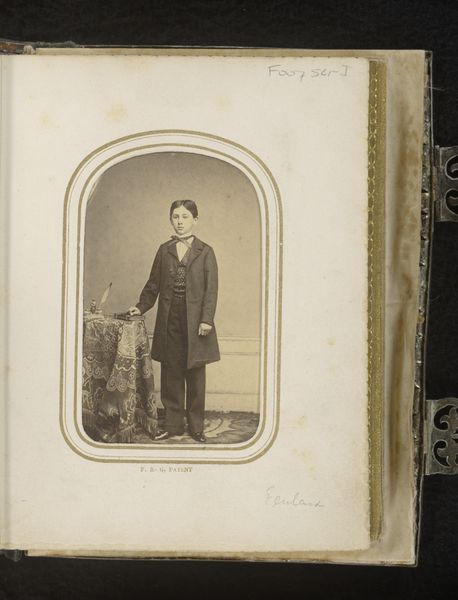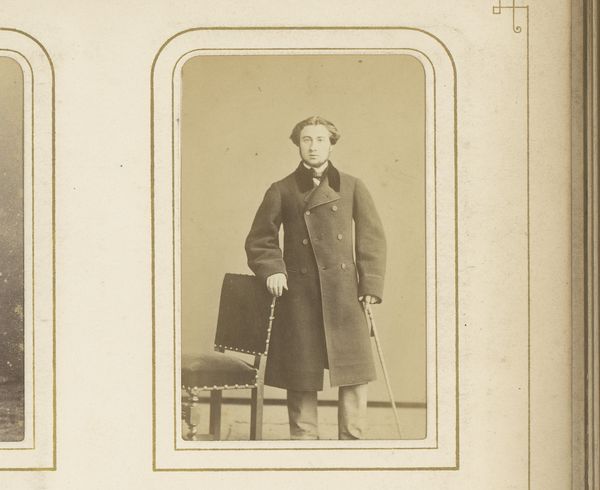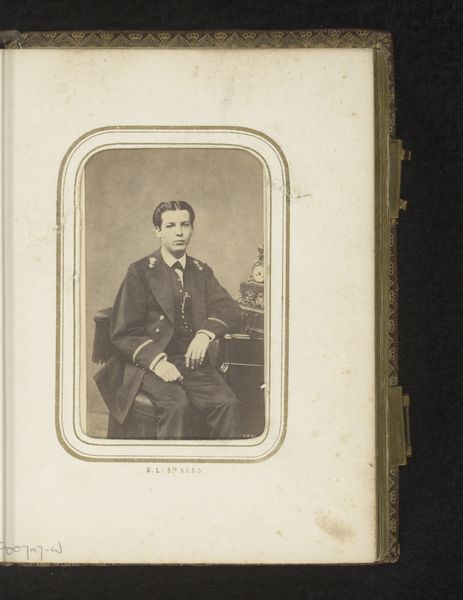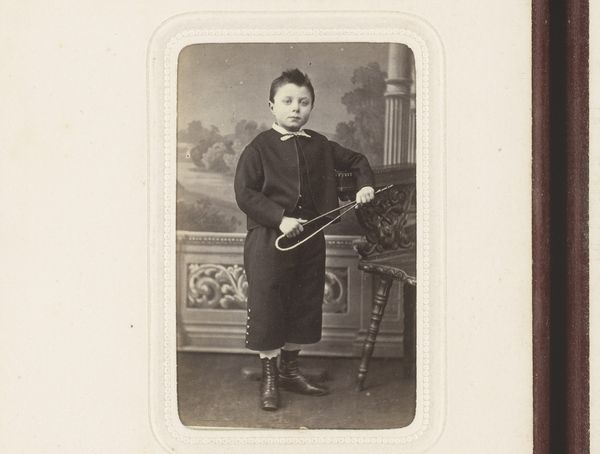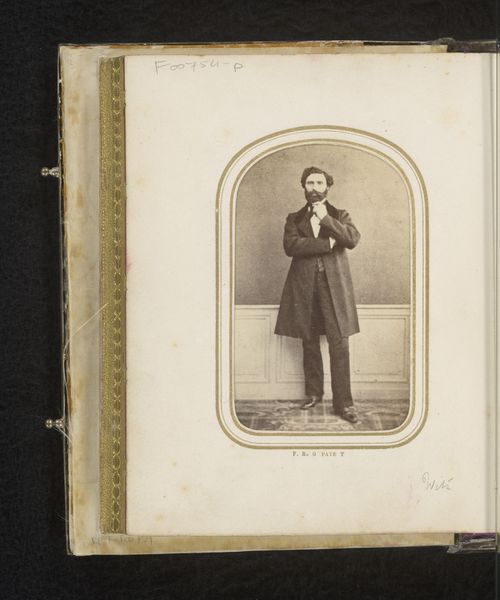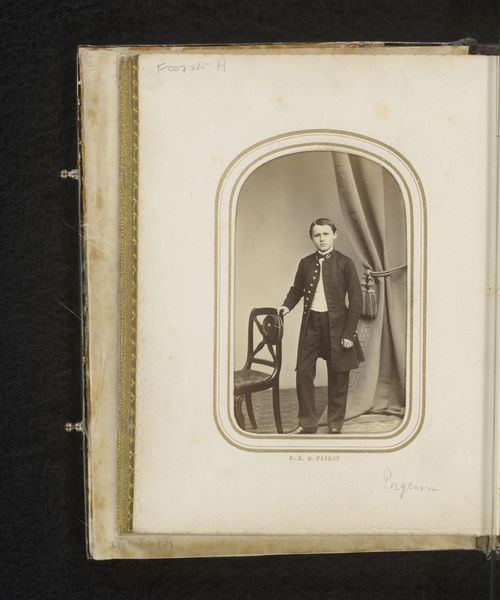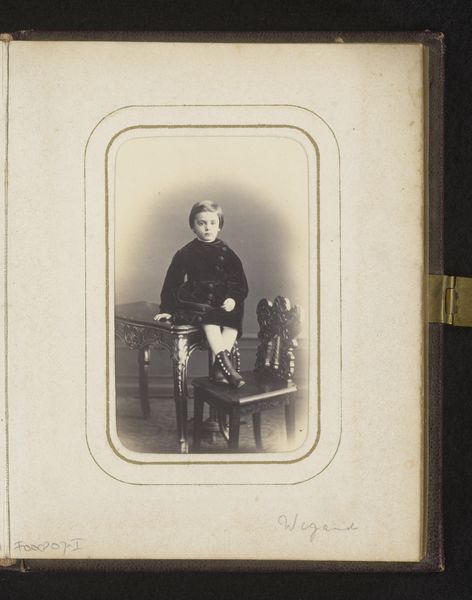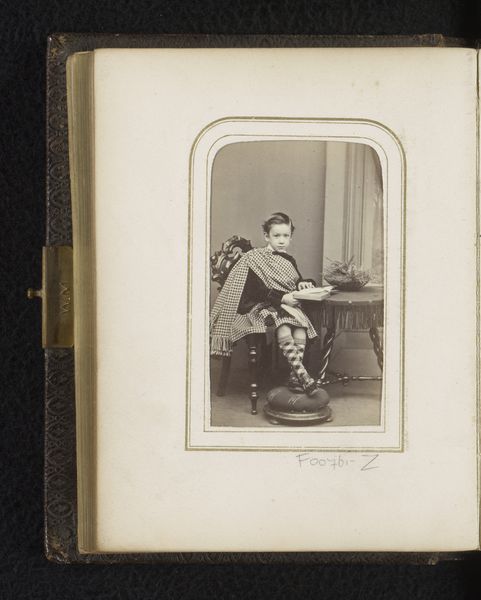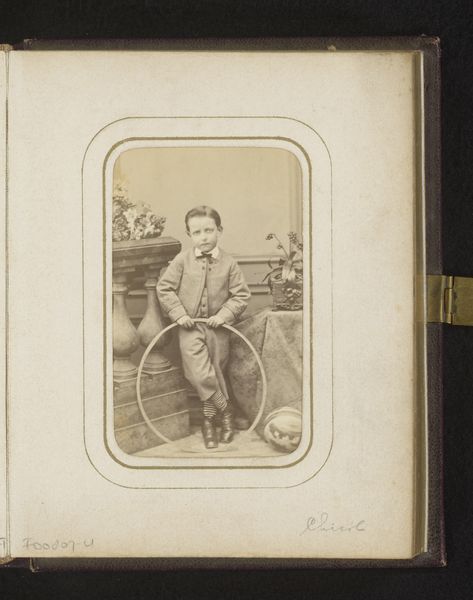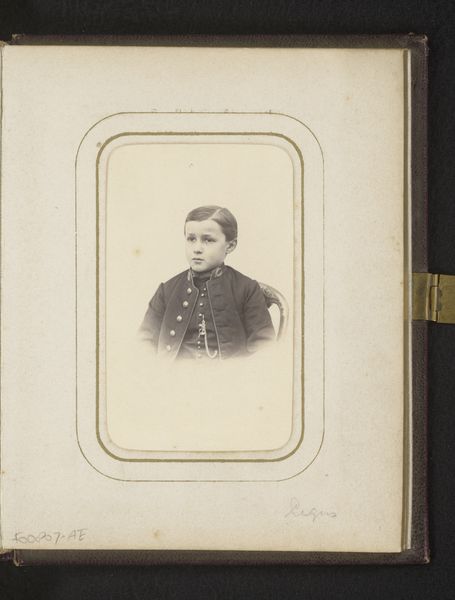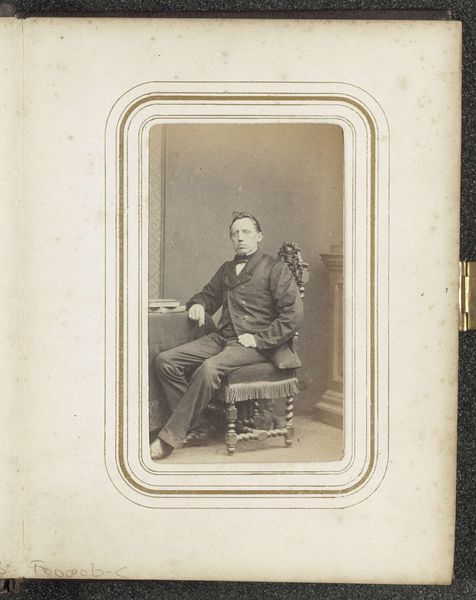
Portret van een staand kind in mantel, aangeduid als Gustave Lerat fils 1860 - 1900
0:00
0:00
photography, albumen-print
#
portrait
#
figuration
#
photography
#
albumen-print
Dimensions: height 84 mm, width 52 mm
Copyright: Rijks Museum: Open Domain
Curator: Looking at this albumen print, we see a "Portret van een staand kind in mantel, aangeduid als Gustave Lerat fils," or Portrait of a standing child in a coat, identified as Gustave Lerat fils, dating between 1860 and 1900, created by Adolphe Legros. It's quite evocative, wouldn't you say? Editor: Absolutely. There's a melancholy to it, isn’t there? The child's expression, the muted tones, the slightly blurred quality of the photograph…it all combines to create a sense of wistfulness. I am curious to examine what message the work can hold when focusing on the politics of imagery and the social context. Curator: The rigid formality of these early photographs often dictated the subjects' poses. Photography at that time, emerging as it was, played an essential role in shaping social identity and the public persona. Think about it: This image enters and shapes collective memory. I think it is fair to consider this portrait as a cultural object. Editor: That's fascinating, considering how childhood is constructed in our collective understanding today versus in the latter half of the 19th century. It strikes me how carefully constructed this image is for that time. Everything is there: clothes, pose, backdrop. The gender dynamics play out: it could signal an era when expressions of sensitivity in boys were considered signs of refinement and status. Curator: And think about how class distinctions were enforced, performed and broadcast at the time via photographs like this! A simple portrait might suggest social status. Who got to sit for a professional photo, and how they were styled, says so much. I mean, photography’s institutional history alone tells us a great deal. Editor: Indeed, considering the intersectional lenses, you can consider gender performance, class display and so much more. Even today, what we put on social media performs these very functions for us now in different formats. What message would we take away from this little boy now? Curator: The questions the work generates! These photographs, these objects, really serve to open our eyes and encourage these lines of questioning to examine a culture. I always look to the archives for those hidden figures. Editor: Absolutely. These historical works challenge us to continuously consider perspectives—and power dynamics–then and now.
Comments
No comments
Be the first to comment and join the conversation on the ultimate creative platform.
